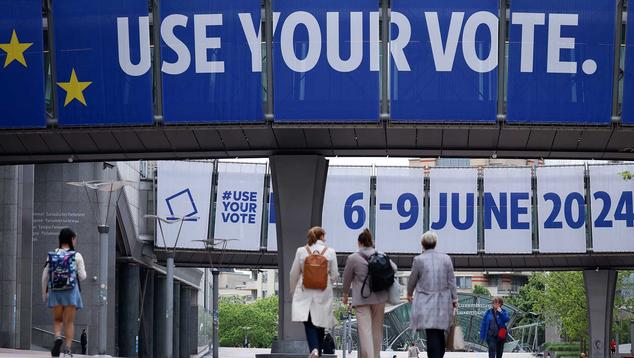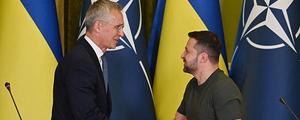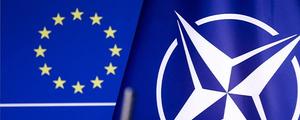LONDON -- Millions across the European Union will go to the polls starting this week to vote in the bloc’s parliamentary elections. The European Parliament is the only directly elected transnational assembly in the world, and the laws it shapes have wide-reaching effects on the lives of people in EU member states.
Ahead of the election, here are four things to know about the mindset of the EU electorate:
1. EU’s Leadership Earns Approval Across Most of the Bloc
Median approval of the EU’s leadership among its member states has grown steadily for the past decade. In 2012, not long after the global financial crash and eurozone debt crisis, approval was at its lowest point on record, at 40%. Fast-forward a decade, and nearly two-thirds across the EU approve.
Over the past 10 years, every country has grown substantially more approving of the EU’s leadership, apart from three countries where approval remained stable: Luxembourg, Slovakia and Bulgaria.
In 2013, a majority of the population approved of EU leadership in three out of the current 27 member states. Last year, a majority approved in 22 of 27 member states. Many of the biggest increases in EU approval have come from some countries hit hardest by the 2008 global financial crisis and European debt crisis, including Iceland, Spain, Portugal, Ireland and Greece.
While approval of EU leadership has grown over the past decade, this has not coincided with a corresponding decline in disapproval, which has been relatively flat, around 30%, for several years. Rather, the growing approval ratings of EU leadership are attributable to a decline in people offering no opinion.
Since 2018, the don’t know/refused rate has been below 10%, falling to 5% last year. While general approval has grown in turn, a consistent group -- roughly a third of people within member countries -- disapprove of the EU’s leadership.
2. More Migrants, More Accepting of Migrants
Cases of legal and irregular migration to the EU have been increasing in recent years. The European Parliament recently approved a major “Asylum and Migration Pact” that will tighten rules and require member states to share responsibility for asylum seekers, but it will not come into force until 2026. Many far-right parties are expected to make gains in the elections by making migration a central part of the campaign.
Gallup has previously found that migrant acceptance strongly predicts EU approval. Gallup’s Migrant Acceptance Index gauges people's acceptance of migrants based on three questions that ask whether people think migrants living in their country, becoming their neighbors and marrying into their families are good things or bad things. Scores on the index range from zero to nine, with higher scores indicating higher acceptance.
Beyond being a strong predictor of EU approval, migrant acceptance is also closely related to real levels of migration across Europe. The higher the proportion of an EU country’s population born abroad (outside of the bloc), the more accepting that country is toward migrants. Ireland scores highest on the Migrant Acceptance Index (8.0), while Croatia scores lowest (1.9).
While many factors shape public attitudes toward migration, the close link to actual levels of migration across member states is notable.
3. Economic Optimism Rebounds but Still Below Pre-Pandemic Levels
While the economy is only one factor in these elections, which will be defined by a whole host of other national political issues and alliances, it is nevertheless an important backdrop to the vote.
The European economy has had a turbulent few years. After the COVID-19 pandemic and associated societal shutdowns, inflation stood at 11.5% in October 2022, its highest point in years. Meanwhile, Russia’s invasion of Ukraine sent global energy prices soaring.
Last year, across EU member states, a median of 41% felt their local economy was getting better, up from 30% in 2022, when inflation was at its previous peak. As inflation eased in 2023, people’s economic optimism grew. Yet things are still not back to pre-pandemic levels.
In 2018 and 2019, a median of 45% across member states felt their local economies were getting better, the most optimistic since 2007, just before the global financial crisis.
4. Putin Remains a Pariah as Balance of Influence Shifts
Since Gallup started measuring public opinion of global powers across Europe, the EU’s leadership has consistently earned higher net approval ratings than Russia’s. Net approval subtracts the percentage of people who disapprove of a country’s leadership from the percentage who approve, offering a nuanced picture of public opinion that implicitly includes those who offer an opinion.
Across member states, the median net approval of the EU has consistently been higher than Russia’s, but this relationship has changed over time. Median approval ratings of both declined at similar rates between 2009 and 2013. Median net approval of Russia’s leadership then hit a new low of -55 in 2014, the year it first sent troops into Ukraine and Crimea.
Between 2015 and 2021, Russia gradually regained some goodwill among EU member states, rising to a median net approval rating of -36. But when Russia invaded Ukraine in 2022, these modest gains vanished.
The gap in net approval between the EU and Russia among EU member states now stands at its widest point on record. This is significant as the EU looks to present a unified front in defense of Ukraine. While EU member states feel more strongly toward disapproving of Moscow than approving of Brussels, it remains true that these member states are currently more closely aligned with the West than Russia at any point over the last 15 years.
Only Bulgaria gives the EU and Russia equal net approval ratings (+6 points each). Greece, Slovakia, Hungary and Cyprus see the next smallest differences in net approval between the EU and Russia. Yet these gaps in net approval are still wide -- around 50 points -- and all four countries remain much more closely aligned with the EU than Russia.
Bottom Line
The coming EU parliamentary elections are significant not only in how the EU is governed and the political direction of the bloc over the next five years but also in what they reveal about national political sentiment within member states. Key fault lines in these elections fall along the economy, migration, and the ongoing war in Ukraine, to which the EU has given billions of euros in aid to support.
Once results have been announced, it remains to be seen how the effects of the economy, migration and the war in Ukraine will change public sentiment toward the bloc in the coming years.
Editor's Note: On Oct. 16, 2024, the first graph in this story was updated to reflect changes in the median approval of the European Union. The adjustments were made to correct a discrepancy in the data. These changes do not affect the overall findings of the story but provide a more precise representation of the data.




